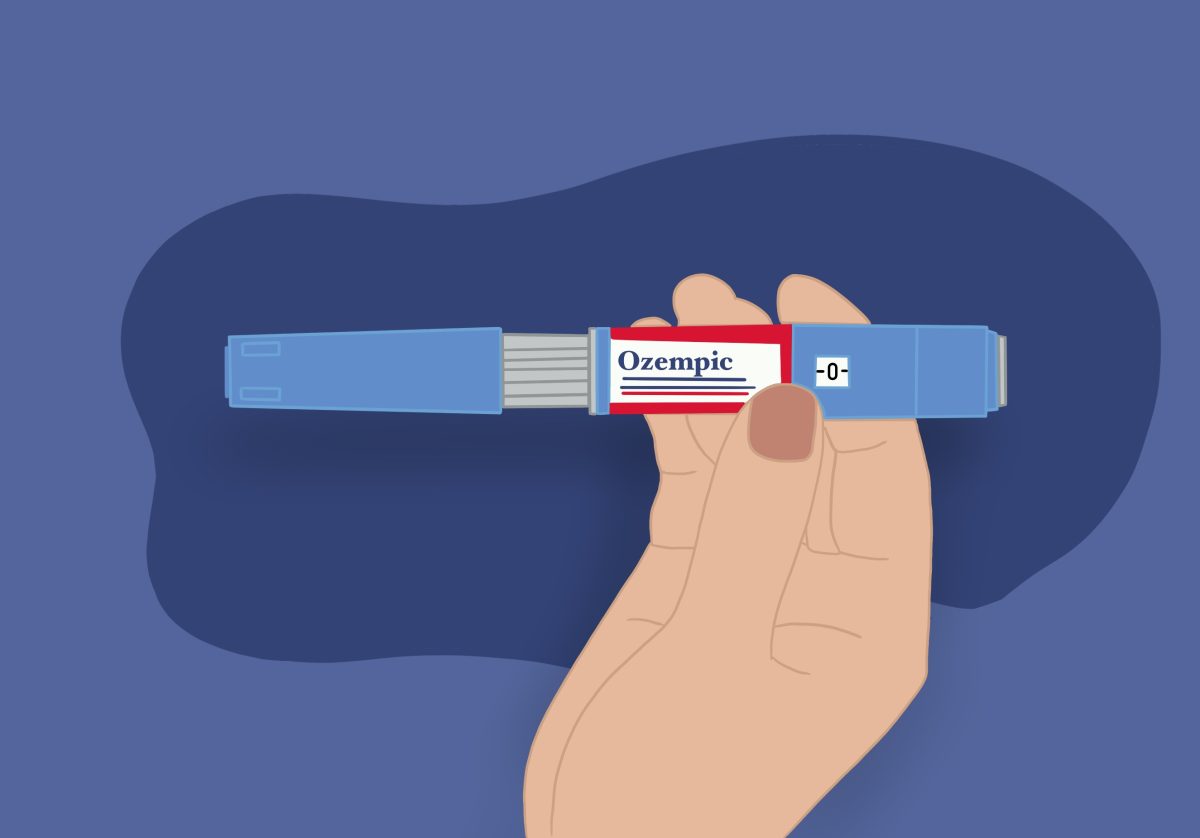With Ozempic generating mass media attention in recent months, University of Minnesota researchers discussed the drug’s original purpose and disclosed potential risks for disordered eating.
Researchers from different areas of study, including pediatrics, psychiatry, endocrinology and diabetes, addressed misinformation about the drug and described how it works in the body.
Ozempic and Wegovy: the same, but different
So what do people call it? Is it Ozempic, Wegovy or Semaglutide? The first step in addressing the title is determining what the “it” is, and if they are speaking about weight loss, diabetes or both.
Aaron Kelly, co-director for the Center for Pediatric Obesity Medicine, the leading group in the world for helping develop obesity medicines for children and adolescents, said he noticed the names used interchangeably across social media.
Most drugs have a generic name accompanied by a treatment, Kelly said. Ozempic is generically known as Semaglutide, and the dosage of two milligrams once weekly was approved in 2017 by the Food and Drug Administration for adults diagnosed with type 2 diabetes.
The same drug containing the same molecules at a slightly raised dose of 2.4 milligrams is now approved for the treatment of obesity in adults and adolescents, and that is referred to as Wegovy, Kelly added.
“It’s very confusing,” Kelly said. “It was not the wisest move. Really, they should have just chosen one name.”
Drug companies should have indicated the drug is approved for type 2 diabetes at this dose, and it is approved for a treatment for obesity at a slightly higher dose, Kelly added.
How it works and potential side effects
The primary cause of obesity from a biological perspective is a dysregulated metabolism, Kelly said. The body works to maintain a homeostatic set point for the regulation of energy.
“Obesity is not a behavioral problem. It’s not a behavioral disease. It’s, we believe, primarily biologically driven, interacting with an obesogenic environment,” Kelly said.
Medications like Wegovy and Ozempic help address these biological factors, Kelly added. These drugs work in the hypothalamus with GLP-1 receptors, which are the eating thermostat in the brain, to reduce hunger and appetite.
These drugs also work to enhance satiety in the hindbrain, making users not only get fuller faster but stay fuller for longer, Kelly said.
In GLP-1 agonists, the most common side effects in trials have been gastrointestinal, according to Kelly. Although about a third of patients taking these medications experience nausea and vomiting, these symptoms usually improve over time.
“My professional opinion is that the potential benefits in a medically eligible patient greatly outweigh the potential risks, and so it’s been a really positive change,” Kelly said.
Who qualifies for Ozempic and the pitfalls in BMI
For adults, medical eligibility for Ozempic is based on body mass index (BMI), Kelly said. A BMI of 30 or higher in adults meets the criteria, and if an adult has a slightly lower BMI of 27.5 with weight-related complications (sleep apnea, high blood pressure and high cholesterol), they could also meet the criteria.
“BMI has recently been under some pretty heavy criticism, ” Kelly said. “It actually is, I think, a much better measure than many people get to give it credit for, but clinical care providers use it as a starting point. It’s not the end-all be-all.”
Tasma Harindhanavudhi, an associate professor of medicine in the Division of Diabetes, Endocrinology and Metabolism, said although BMI is easy to measure using height and weight, it leaves out other important health indicators.
“I usually try not to use weight loss medications as the first option,” Harindhanavudhi said. “I try to help them to modify their diet or have a healthier lifestyle first, before giving or prescribing any weight loss medications for patients.”
Since BMI cannot measure visceral fat, which is stored within the abdomen, it fails to assess the risk of unhealthy amounts of fat in the blood and cholesterol levels, Harindhanavudhi said.
In the Diabetes and Endocrinology Clinic at the University, clinicians use waist circumference, BMI and body composition scales that can measure body fat percentage and muscle mass, Harindhanavudhi added.
Lisa Anderson, co-director for the Minnesota Center for Eating Disorder Research, said BMI is an imperfect measurement used widely by medical professionals because it is an easy metric to communicate.
“It doesn’t capture what is truly going on in an individual,” Anderson said.
Many people live in larger bodies doing everything a registered dietitian would recommend when it comes to eating habits and exercise, Anderson said. Their labs look fine if a nutritional and metabolic panel is run, and their results indicate they are healthier than the person next to them in a thinner body.
“In my opinion, when it comes to drugs like Ozempic or Wegovy, to have a threshold decision-making point about if ‘this person is at BMI of this or above’ qualifies, goes against what I think we would do for anything else,” Anderson said.
For any other medication, if appearance or another physical factor were used without running labs or requiring a documented medical need, it would be considered highly unusual, Anderson added.
“It’s a little bit counterintuitive that some folks simply say, ‘Yes, you can take this drug and use it for off-label uses for weight loss,’ simply based on your BMI,” Anderson said.
Risk for disordered eating behaviors and food noise
Drugs like Ozempic are referred to as GLP-1 agonists, which is a broad class name for medications used in the treatment of obesity and type 2 diabetes, Anderson said. These drugs are promoted by people who have significant influence on social media.
The research suggests this exposure and culture has a major impact on eating disorder risk and onset, especially among teens and young adults, Anderson added.
The side effect of weight loss essentially crept in, instilling the idea that this drug can successfully reduce cravings and the reward value of food and contribute to the increased success of calorie restriction, Anderson said.
“I think that feeds into and is probably fueled by the anti-fat attitudes and weight stigma that is pretty prevalent in our society right now,” Anderson said.
On the other hand, Kelly said he believes Ozempic can ultimately do the opposite and destigmatize obesity and body size because it breaks the barriers of internal bias.
It is not that people living in larger bodies lack willpower, Kelly said. What drugs like Ozempic do is release the blame on the individual and help mentally reduce what he refers to as “food noise,” a hallmark of energy dysregulation where the brain tells the body it should always be hungry.
The concerns of disordered eating should not be dismissed but followed very closely, Kelly said. When teens engage in “do it yourself” weight loss because they are fighting their environment and biology, there is the risk of developing unhealthy weight-related behaviors.
“What the literature tells us about medically supervised obesity management is that it actually does not lead to an increased incidence of eating disorders,” Kelly said. “If anything it tends to reduce eating disorders and in the adult and adolescent clinical trials of these medicines.”














R Shah
May 1, 2024 at 12:00 pm
Informative story. Interesting that such off-label use is contributing to the drug’s shortage.